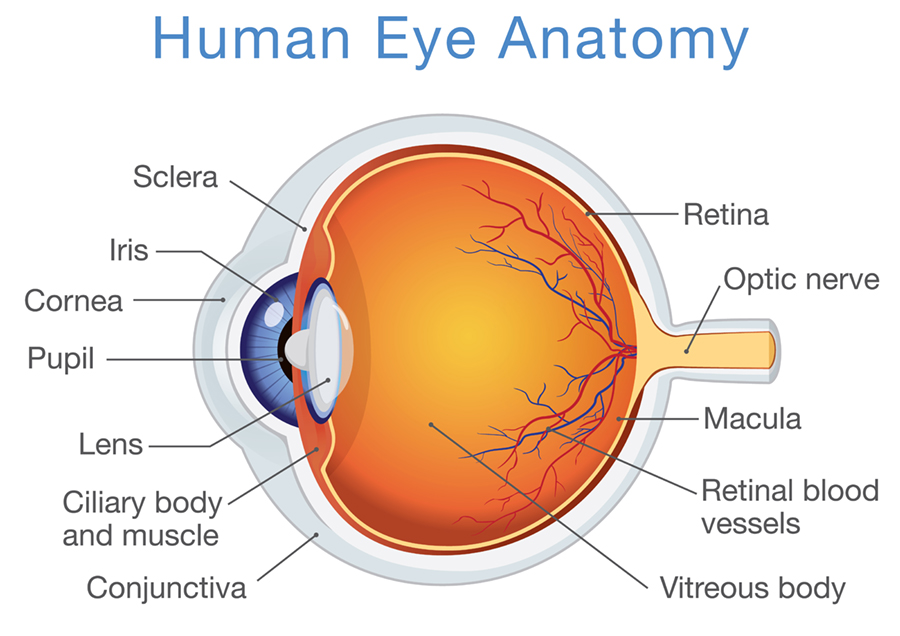Everyone’s eyes are different and so are the types of vision that we have. Understanding how some of us see differently and how the eyes change over time will help protect your vision.
What are the parts of the eye and how do they work?
The outside clear layer in the front of the eye is the cornea. Around the cornea is the white part called the sclera. Light rays enter your eye through the cornea as they bounce off the object you are looking at. The light then passes through the pupil, which is the black circle in the middle of your iris. The iris is the colored part of your eye. This controls how much light is needed as it goes into the eye for you to see well. The iris closes the pupil in bright light and opens it when light is dim.
Behind the iris is a clear lens that changes shape as you look at objects at different distances. Light goes through this lens on its way to the retina at the back of the eye. The retina is a special layer of nerves on the back inside wall of your eyeball. The retina turns the light rays into images or pictures and sends them to the brain as impulses (signals). The brain combines the images that each eye sees to make one picture. It also helps you understand what you are seeing.

How can I keep my eyes healthy?
Yearly vision examinations are an important part of preventive health care. Many eye and vision problems have no obvious signs or symptoms. As a result, individuals are often unaware that problems exist. Early diagnosis and treatment of eye and vision problems are important for maintaining good vision and eye health, and when possible, preventing vision loss.
At VisionFirst, your eye health is our top priority. If you are experiencing changes in your vision, contact one of our 15 convenient locations to schedule an appointment or click here to visit our Appointment Center to submit an appointment request online. The earliest detection can help ensure a lifetime of good vision.
